15.01.2025
The Brainfix Series 3 - Brainfix - Houston, we have some glitches in our system

In the previous blog and episode about Brainflix, we learned that our unconscious brain can be considered as a dominant decision taking machine. It does an amazing job but... it also runs outdated programs that can lead to unhealthy habits. Our evolutionary brain's preference for high-calorie foods no longer serves us well in societies with abundant processed foods, contributing to issues like obesity. Additionally, impulsive behaviours driven by immediate rewards can lead to financial recklessness, risky actions, or addictions.
Do you still remember Nic - our Personal Assistant (the film technician of our unconscious brain)? He does an amazing job in running many brainflix shows at the same time but in some cases he panics. At that moment, he reacts by ‘fight, flight or freeze’. He doesn’t know how to adapt to the desired change and in most cases - after a little panic attack - he returns to the old behaviour because that’s the one he knows best.
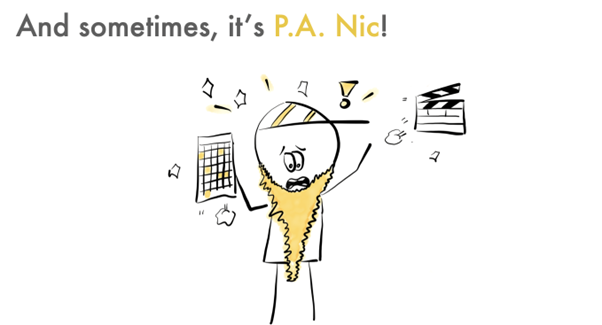
🦒 Close Encounter: When Oubaas the Giraffe Stole the Show 😱
I can share a personal story where the fight, flight or freeze reaction happened to me. A few years ago, I had the chance to go to a conference in Namibia and I had decided to stay a few days at a resort where you could do some safari tours. On the first evening, I had dinner at the restaurant and wanted to walk back to my room - which was located 100 metres further on a small hill. I had to follow a small winding path but suddenly I heard a noise very closeby. I had met ‘Oubaas’ (you could translate this into ‘the old boss’). Oubaas was a full grown giraffe who was enjoying some leaves at a distance of 2 metres in front of me. I can assure you at that moment, my primal brain took over immediately. My first reaction was freeze.
It took me 2 or 3 seconds to become aware of what animal was in front of me and I remembered that they warned me that you should hide behind a tree when you encounter a giraffe because one hit of a leg of an agitated giraffe can kill a human being. Now, there weren’t a lot of trees around because it was a very small winding path so after 2 extra seconds, my ‘flight’ mode got into action and I started to run back to the restaurant. My conscious brain didn’t have the time to tell me that a giraffe can of course run a lot faster than a human being but my unconscious brain made the decision to run. And I can tell you that it was probably my fastest sprint ever. Luckily I heard afterwards that Oubaas was quite used to human beings and not dangerous - they still recommended staying at a safe distance - but I can tell you that my unconscious primal brain was in the lead at that moment. And it’s of course a great story to share afterwards.
Now back to the ‘normal’ world (for most of us) where we don’t have any giraffes or other wild animals running around, but they are exchanged by demanding bosses and clients in a volatile, uncertain, complex and ambiguous world. At those moments, the ‘fight, flight or freeze’ reaction isn’t the best solution when we want to change certain behaviour.
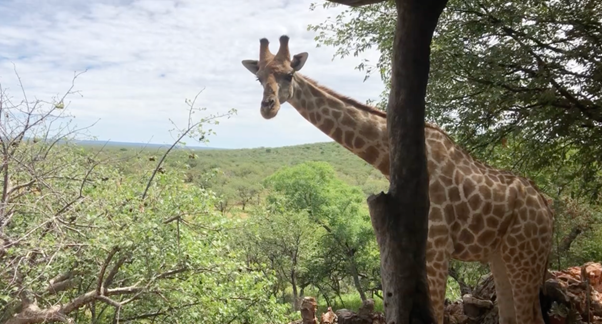
🔍 Navigating the Maze of Human Bias 🧠
We have a lot of biases. This is perfectly illustrated in this study where over 80,000 professionals were asked to rate their performance. 70 percent stated they believed themselves to be in the top 10 percent of their peer group. 82 percent believed they were in the top 20 percent, and 98.5 percent placed themselves within the top half. But, of course, not everyone can be at the top.
Cognitive biases and stereotypes that are deeply rooted in our minds can affect how we see things and interact with others, sometimes causing unfair treatment and bias. When we're young, especially from when we're born to about seven years old, our beliefs and how we act are shaped a lot. Beliefs that hold us back, like thinking "I'm not good enough" or "Change is too difficult," often come from when we were young and still affect us without us realising it, similar to how cognitive biases work, influencing how we make decisions.
A great website to explore the different biases is thedecisionlab.com where you find almost 100 different biases described with examples. We have made a selection of a few biases:
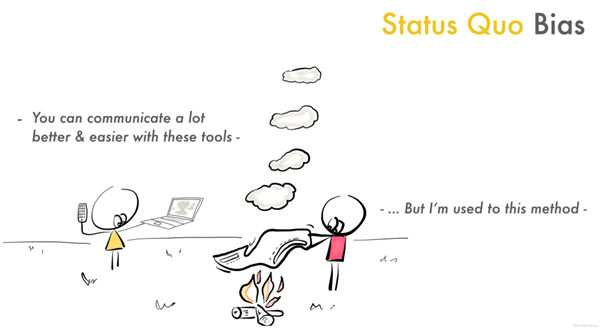
The status quo bias is a cognitive bias where individuals tend to prefer maintaining the current situation or decision rather than opting for change, even when the potential benefits of change outweigh the benefits of staying the same. This bias is rooted in familiarity and comfort with the existing state of affairs, leading people to resist altering their current circumstances, routines, or beliefs. It can result in inertia and resistance to innovation or improvements, as individuals may perceive change as risky or disruptive to their established norms.
For example, consider a company that has been using outdated software for several years. Despite the availability of newer, more efficient software options in the market, employees are resistant to transitioning to a new system. They prefer to stick with the familiar, albeit less effective, software because they are accustomed to its interface and functionalities. This reluctance to change stems from the status quo bias, as employees perceive the effort and potential disruptions associated with adopting a new system as outweighing the benefits it may bring in terms of increased productivity and efficiency.
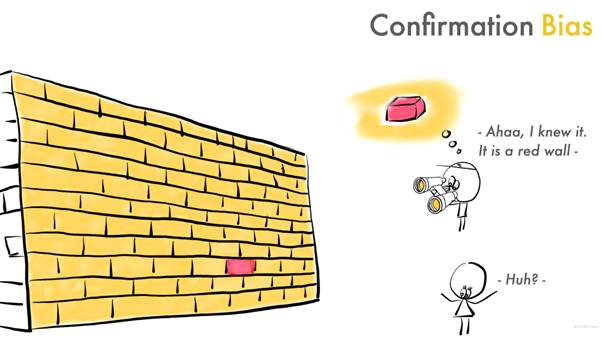
Confirmation bias is when people tend to only believe information that supports what they already think, and they ignore anything that goes against it. It means they seek out and pay attention to things that agree with their beliefs, even if they might be wrong. For instance, if someone believes that a certain political candidate is the best choice, they might only pay attention to news stories that praise that candidate and ignore any negative reports, even if they provide valid criticism.
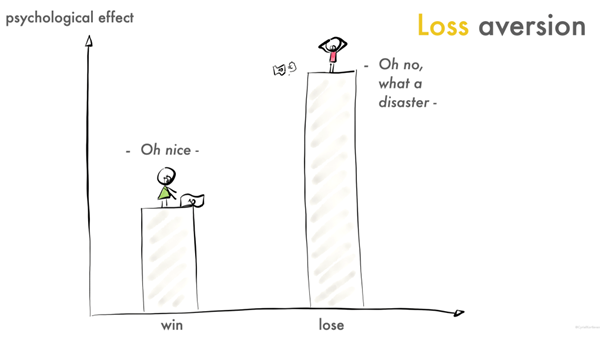
Loss aversion bias refers to the tendency of people to strongly prefer avoiding losses over acquiring equivalent gains. In other words, individuals are more motivated to avoid losing something they already have than to gain something of equal value. This bias is a fundamental aspect of human psychology and has significant implications in decision-making, particularly in economics and finance.
An example of loss aversion bias is when someone refuses to sell a stock that has been consistently losing value because they don't want to "realise" the loss by selling it at a lower price than they paid for it. They hold onto the stock in the hope that its value will eventually rebound, even if it might be more rational to sell and cut their losses.
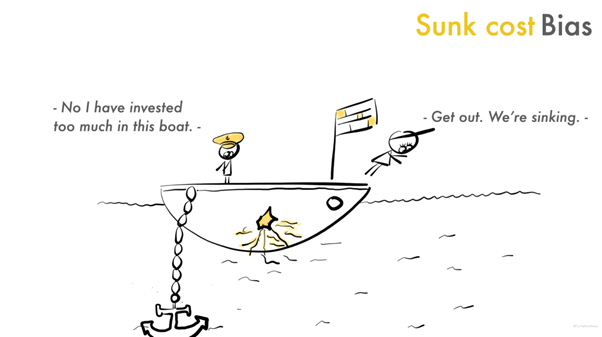
Sunk cost bias, also known as the sunk cost fallacy, refers to the tendency of individuals to continue investing resources, such as time, money, or effort, into a project or decision, even when it is clear that the costs outweigh the benefits. This bias happens when people think about money or time they've already spent, even if it doesn't matter anymore for the choice they're making now.
For example, imagine someone has already spent a significant amount of money on tickets to a concert, but they realise they no longer want to attend. Despite knowing they won't enjoy the concert, they may still decide to go simply because they've already paid for the tickets. In this case, the money spent on the tickets is a sunk cost—it cannot be recovered regardless of the decision to attend the concert or not. However, the individual may feel compelled to attend the concert because they perceive the sunk cost as a loss that must be justified.
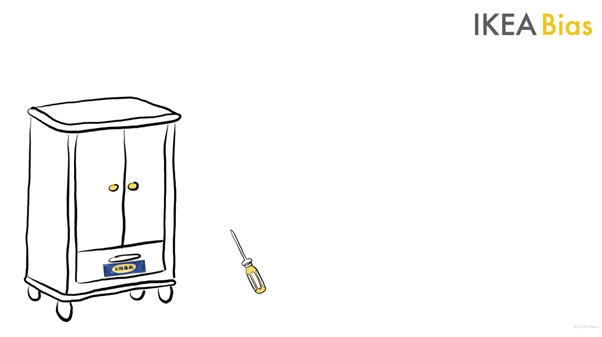
The "IKEA bias" is a term used to describe the tendency of individuals to place a higher value on products or items they have assembled themselves, compared to equivalent items that are pre-assembled or professionally made. This bias arises from the psychological principle known as the "endowment effect", where people tend to overvalue items they own or have invested effort into.
In the context of IKEA furniture, for example, individuals may feel a greater sense of attachment and satisfaction towards a piece of furniture they have assembled themselves, even if it is of similar quality to a pre-assembled piece from another store.
________
This campaign from CPB London on International Womens Day is a great illustration how our biases work:
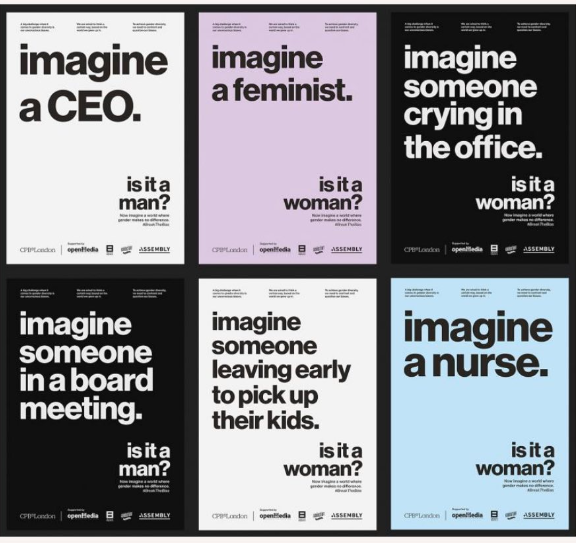
💭 Sssss ... A moment of reflection 🌟
Take a moment to ponder the stories and insights shared in this blog. How do they resonate with your own experiences and challenges? Consider the unconscious biases and primal reactions that may be influencing your decisions. Now, challenge yourself to break free from the status quo and embrace change with a fresh perspective. Let's navigate the maze of human bias together and pave the way for successful change projects. Are you ready to rethink your approach?
Cheers,
Nic (aka Cyriel)
====
Hi, I’m Cyriel - international speaker on 'Making Change Simple'
Change is constant and often scary, but it doesn’t have to be. I bring a simple perspective to help leaders and teams tackle change confidently. Through practical insights, interaction, and humor in my keynotes, you can turn the fear of change into opportunity.
Don’t mind the change. Change your mind.

